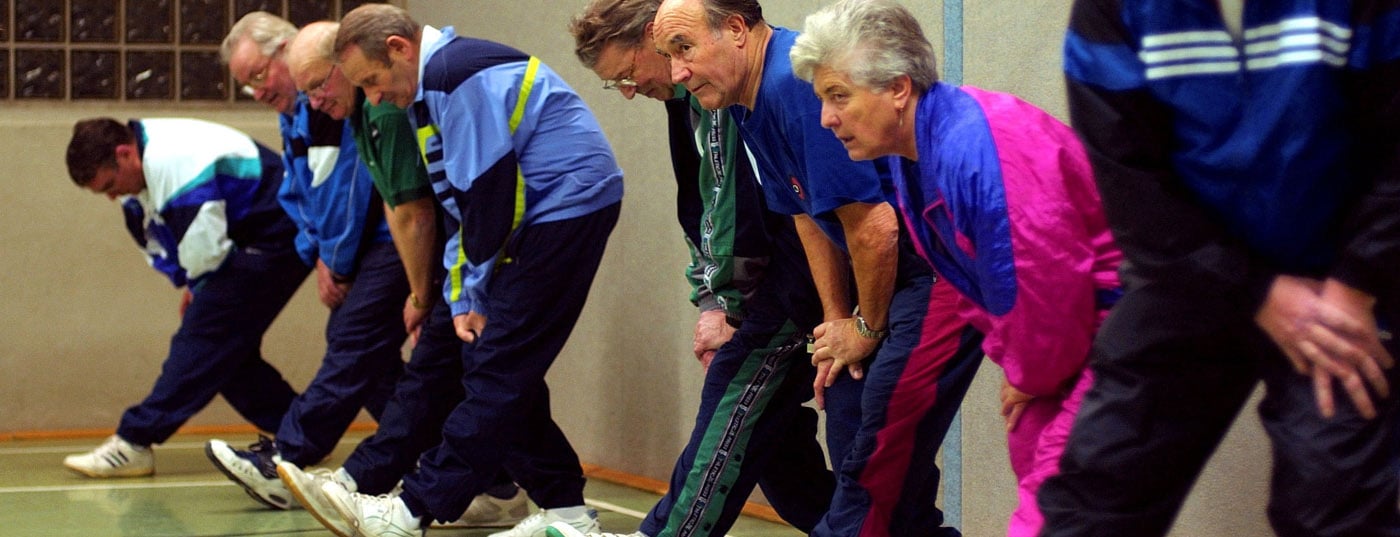As part of the KHM Congress in Lucerne, a luncheon symposium was devoted to the topic of chronic back pain. Prof. Dr. med. Christoph Konrad, Head of Anesthesia at the Lucerne Cantonal Hospital, and PD Dr. med. Kai-Uwe Kern, Pain Practice Wiesbaden, reported on Current concepts of pain processing and therapy.
How pain is created and perceived is enormously complex. The sensory system is very quickly linked to emotions. This is shown by an interesting psychological experiment with ice water presented by Christoph Konrad: test subjects with a demanding, rather punishing partner lasted significantly longer in the ice water test than test subjects who had a non-demanding, all-permitting partner. Thus, frustration tolerance also plays a crucial role in the perception of pain. And unfortunately, “learning” pain is much faster than “unlearning” it. This means that chronicized pain is often difficult to treat and it is important to prevent chronification whenever possible. Influencing factors in chronicity include occupation, lifestyle, psychological complaints, and biological aspects.
Stay active despite pain!
Basically, the same applies to pain patients: If you move, you feel better! Neurodegeneration is lower with activation – Experiments with mice show that paw injuries heal faster in animals kept in cages with plenty of opportunities to move and play than in mice living in cages without employment opportunities. Similar observations can be made in humans: Patients who are prescribed bed rest for acute back pain have, on average, a worse outcome than patients for whom activation is the main focus. Therefore, an important part of managing back pain is to help patients regain a better awareness of their body and how to manage it. of their back (physiotherapy and occupational therapy). Good pain medication is what enables many patients to be more active again in the first place. The application of heat or cold as well as acupuncture can also reduce pain – but only for a short time compared to the effect of pain medication.
Multimodal therapy pays off
Kai-Uwe Kern pointed out in his lecture that in the case of back pain, the context should be considered, for example, whether there is also pain in other parts of the body (fibromyalgia). Imaging is usually of no help in the assessment, because the findings in x-rays resp. on MRI correlate very poorly with the extent of pain: patients with “desert” spine x-rays may be completely pain-free, whereas patients with only minor findings may suffer from severe pain.
Although interdisciplinary, multimodal therapy for chronic back pain is time-consuming and cost-intensive, it can still be worthwhile, as it significantly reduces the incapacity to work of the patients treated. This is shown by a study conducted in Germany: Patients received intensive treatment over four weeks, including the following modules: physiotherapy, movement and posture exercises, patient education, pain medication and relaxation techniques. One year after this intensive therapy, the proportion of patients who were unable to work for more than 30 days per year had decreased from 35.8% to 8% [1].
Treat nociceptive and neuropathic aspects of pain
Often pain is not only nociceptive or neuropathic, but a mixed form is present. According to US medical records, this is the case in 90% of patients with chronic back pain. This must also be taken into account when administering analgesics, which play a central role in all procedures for the treatment of chronic pain – because only when the pain is reduced can the patient also open up psychologically and become more active. Various substance groups can be used for mixed back pain: Tricyclics, SNRIs, antiepileptics, lidocaine and capsaicin patches, and opioids.
A new option is tapentadol, which combines two modes of action in one molecule. Opioid receptor agonism acts predominantly on nociceptive pain, and norepinephrine reuptake inhibition acts predominantly on neuropathic pain. Tapentadol (Palexia®) is effective in the treatment of severe chronic low back pain with and without a neuropathic component [2]. Interestingly, patients’ pain continues to decrease even then (usually between the 6th and 12th week of treatment), even when the dose is no longer increased. Several studies show that fewer patients discontinue therapy due to side effects under tapentadol than under oxycodone (significantly less nausea and constipation) [3].
WHO stage scheme not always useful
Dr. Kern gave some tips on the use of tapentadol in practice: “Slow dosing can be stressful for patients because of the large number of tablets. Do not give up and perform up-dosing to 400-500 mg. It’s helpful to show the patient pictures of the tablets and explain that they’re not just getting more and more tablets, but that later, after they’ve been dosed up, they’ll only have to take a few tablets, but they’ll contain more active ingredient.”
He does not always find it useful to proceed according to the WHO staging scheme in everyday clinical practice: “The WHO developed the staging scheme in 1986 for the treatment of tumor pain, and its plausibility has not been proven for 40 years.” It makes more sense, he says, to take a comprehensive look at the patient and his pain situation and to take the right measure right from the start. “From my point of view, it doesn’t make sense to start therapy with NSAIDs in an old lady with osteoarthritis and a history of ulcers – knowing that it’s dangerous.”
The speaker emphasized the importance of not only inhibiting nociception, but also promoting pain defense with appropriate measures. Keywords here are good sleep, antidepressant therapy, improvement of psychosocial factors, etc.
Source: KHM Congress, Lunch Symposium “Understanding and Treating Chronic Back Pain”, Lucerne, June 25, 2015.
Literature:
- Nagel B, Korb J: Multimodal therapy of back pain. Orthopaedic 2009; 38: 907-912.
- Baron R, et al: Effectiveness and Tolerability of a Moderate Dose of Tapentadol Prolonged Release for Managing Severe, Chronic Low Back Pain with a Neuropathic Component: An Open-label Continuation Arm of a Randomized Phase 3b Study. Pain Practice 2015; 15: 471-486.
- Etropolski M, et al: Safety and Tolerability of Tapentadol Extended Release in Moderate to Severe Chronic Osteoarthritis or Low Back Pain Management: Pooled Analysis of Randomized Controlled Trials. Adv Thera 2014; 31: 604-620.
HAUSARZT PRAXIS 2015; 10(8): 39-41











